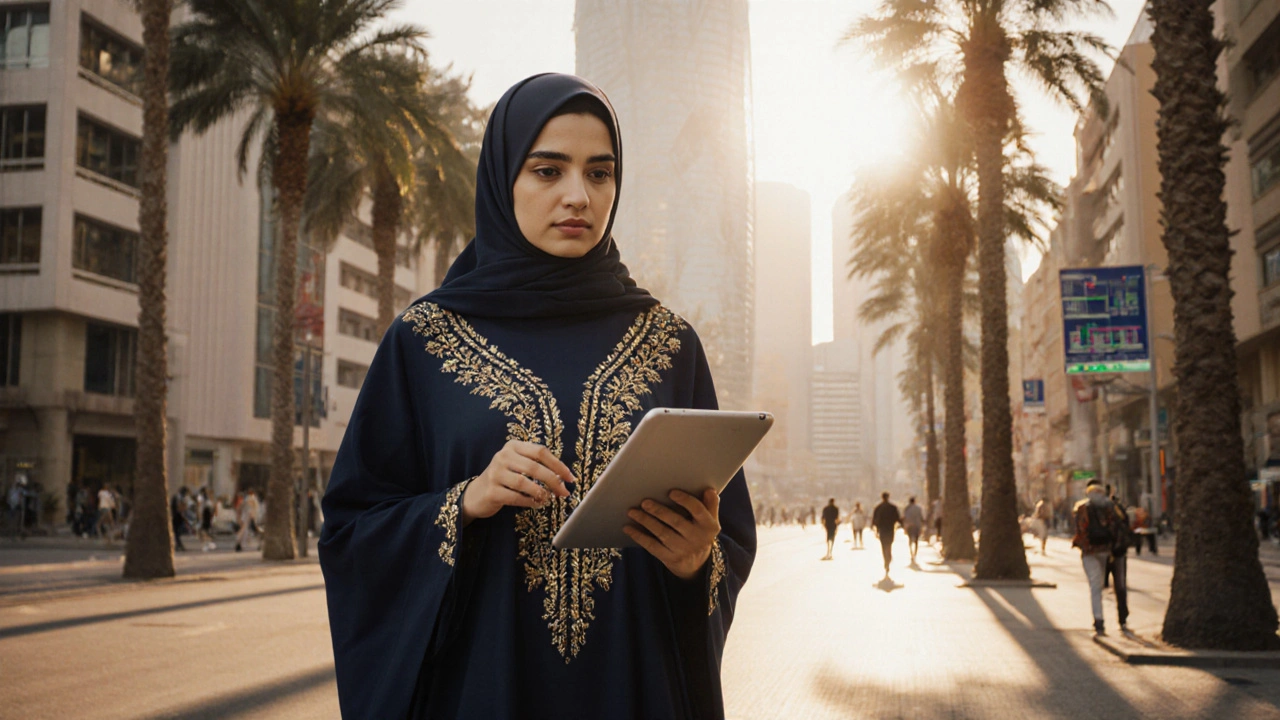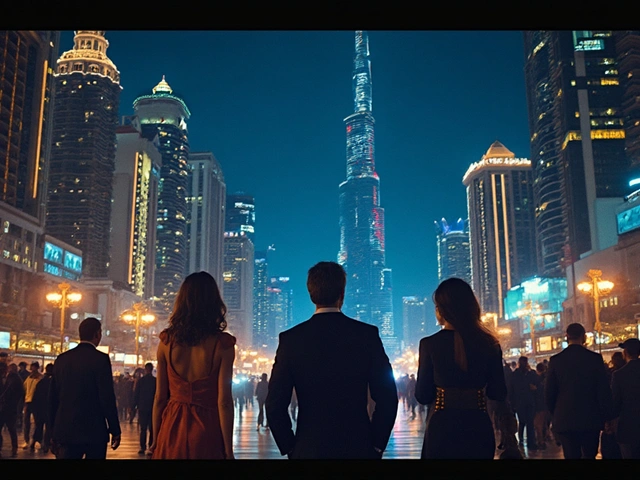When people think of Dubai, they often picture skyscrapers, luxury cars, and desert safaris. But behind the glitz is a quiet, powerful reality: the lives of Arab girls and women who call this city home. They’re not just part of the skyline-they shape it. From the quiet confidence of a student walking to class in Bur Dubai to a young entrepreneur launching a startup in DIFC, Arab girls in Dubai are rewriting what it means to be modern, traditional, and deeply rooted all at once.
Who Are Arab Girls in Dubai?
"Arab girls in Dubai" isn’t a monolith. It includes Emirati nationals, women from other Gulf countries, and long-term residents from Egypt, Lebanon, Jordan, and beyond. Many were born here. Others moved here for work, study, or family. What ties them together isn’t just nationality-it’s a shared experience of navigating a city that moves at lightning speed while holding onto centuries of cultural values.
Take Aisha, a 24-year-old Emirati architecture student. She wears a navy abaya with gold embroidery to class, carries a tablet with CAD designs, and posts her sketches on Instagram under a pseudonym. She doesn’t see a conflict between her faith and her ambitions. She sees them as complementary. Her grandmother wore a thobe made by hand. Aisha designs buildings that honor heritage while using sustainable materials. That’s the rhythm here: respect for roots, relentless push forward.
What They Wear-And Why
You’ll see abayas in every color, cut, and fabric. Some are plain black. Others are embroidered with Swarovski crystals or lined with velvet. You’ll spot them paired with sneakers, designer handbags, or even cycling gear. The abaya isn’t a uniform-it’s a canvas. And it’s not about hiding. It’s about choosing what to reveal.
A 2024 survey by the Dubai Culture Authority found that 78% of Emirati women under 30 customize their abayas to reflect personal style. One popular trend? Layering. A lightweight, open-front abaya over a tailored blazer and jeans. Another? Printed linings that peek out when the wind catches the fabric. These aren’t rebellions. They’re quiet acts of self-expression within boundaries they’ve chosen.
Outside the city center, in neighborhoods like Al Quoz or Al Ain, you’ll see more conservative styles. In Downtown Dubai or Palm Jumeirah, you’ll see more fashion-forward ones. The point isn’t uniformity-it’s agency. Every choice is deliberate.
Education and Career: Breaking Walls Without Breaking Rules
Dubai has one of the highest female university enrollment rates in the Arab world. Over 60% of university graduates in the UAE are women. And they’re not just studying humanities-they’re dominating engineering, data science, and space research.
At the Mohammed bin Rashid Space Centre, three of the five engineers on the Mars Mission team are Emirati women in their late 20s. One of them, Layla, grew up in Ras Al Khaimah. She didn’t have a role model in aerospace when she was 16. But she had a laptop, a Wi-Fi connection, and a library card from the Dubai Public Library. Today, she leads a team developing AI tools for satellite imaging.
Corporate Dubai is changing too. Companies like Emirates, DP World, and Emaar now have formal mentorship programs for young Emirati women. Leadership training isn’t optional-it’s expected. And it’s working. In 2023, 42% of middle-management roles in Dubai’s private sector were held by women, up from 29% in 2018.

Social Life: Privacy, Connection, and Digital Spaces
Public spaces in Dubai are regulated, yes-but that doesn’t mean social life is limited. It just looks different. Weekend gatherings often happen in private villas, rooftop gardens, or members-only clubs. Family is central. A Friday brunch might include three generations: grandmothers sipping cardamom coffee, mothers debating business strategies, and teenage girls filming TikToks under a canopy of fairy lights.
Instagram and Snapchat are huge. But not for showing off. They’re for sharing art, poetry, recipes, and stories. A popular account called "Dubai Diaries" features real women talking about their first job, their struggles with anxiety, or how they learned to drive. No filters. No staged poses. Just honesty. It has over 200,000 followers.
There’s no nightlife like in New York or Berlin. But there’s a thriving café culture. Quiet spaces where women study, meet clients, or just sit with a book. Places like The Bookworm or The Library Café in Alserkal Avenue are filled with Arab girls in their 20s and 30s, laptops open, headphones on, sipping cold brew.
Challenges They Face-And How They Overcome Them
It’s not all smooth sailing. Family pressure to marry early still exists. Some women are pushed into roles they didn’t choose. Workplace bias, though shrinking, hasn’t vanished. And there’s still stigma around mental health.
But the response is powerful. Support networks have exploded. Organizations like "Women of Dubai" offer free legal advice, career coaching, and therapy referrals. Online communities like "Emirati Sisters" connect women across the Emirates. They share job leads, recommend therapists, and even organize group trips to Oman for weekend escapes.
One of the most powerful tools? Language. More young Emirati women are fluent in English, Arabic, and often a third language like French or Mandarin. That’s not just for resumes. It’s for claiming space. When you can speak the language of global business and still quote classical Arabic poetry, you don’t need permission to be seen.

What You Won’t See-But Should Know
Media often portrays Arab women in Dubai as either oppressed or exoticized. Neither is true. You won’t see them waiting for rescue. You won’t see them begging for attention. You’ll see them building. Teaching. Leading. Healing.
There’s a 19-year-old from Sharjah who started a nonprofit teaching coding to refugee girls. There’s a 31-year-old mother of three who runs a successful halal skincare brand from her home in Jumeirah. There’s a 27-year-old who works as a marine biologist, studying coral reefs off the coast of Fujairah.
They’re not exceptions. They’re the norm.
The Future Is Already Here
Dubai’s Vision 2030 doesn’t just talk about economic growth. It talks about human capital. And Arab girls are at the center of that plan. The government funds scholarships, innovation labs, and startup grants specifically for women. The UAE even launched a national program called "Women in Science," with a budget of over $200 million.
When you walk through the Dubai Design District, you’ll see young Emirati women running fashion pop-ups, art galleries, and tech startups. They’re not trying to fit into someone else’s idea of success. They’re designing their own.
The next time you hear "Arab girls in Dubai," don’t picture a stereotype. Picture a student in a lab coat, a mother running a business, a poet on Instagram, a scientist in a control room. They’re not waiting for permission. They’re already building the future-quietly, powerfully, and without apology.




